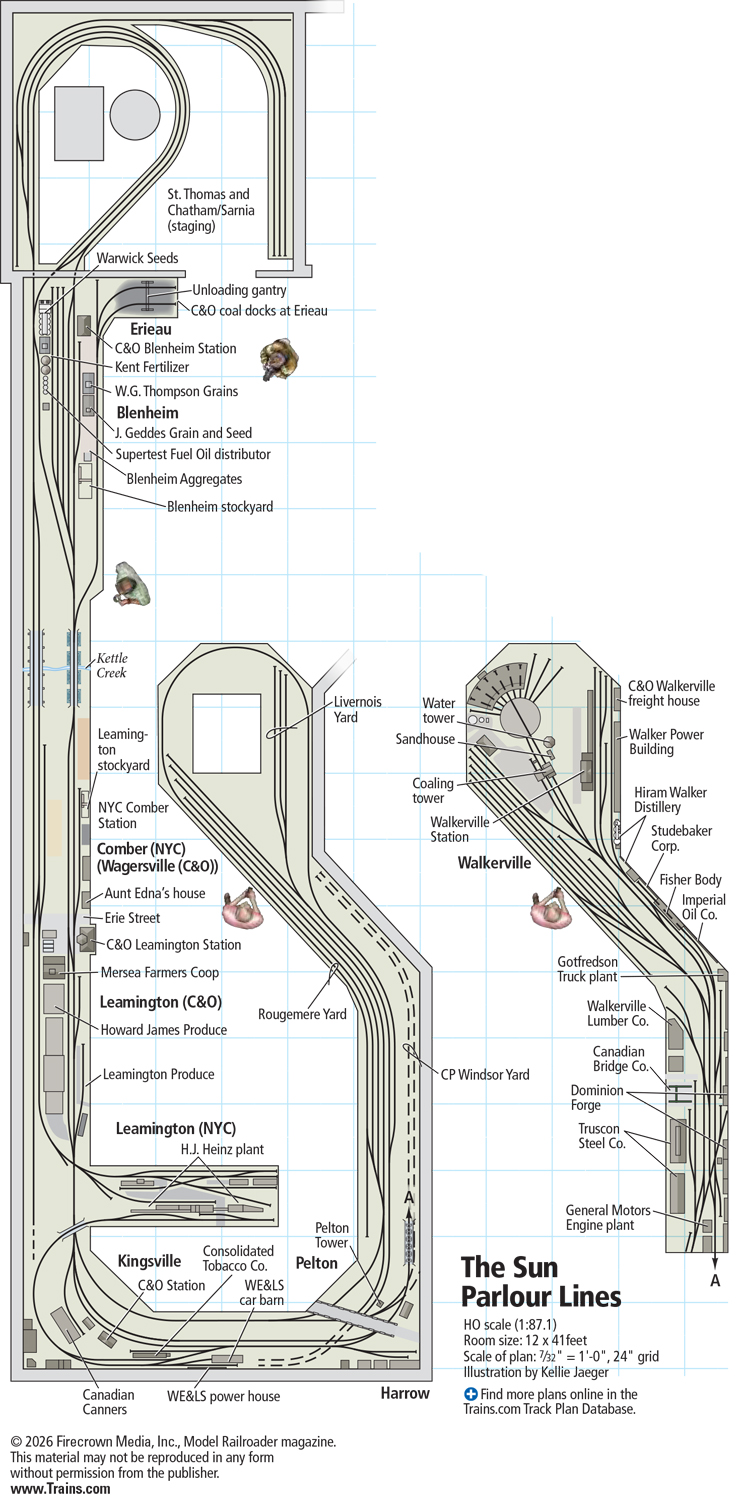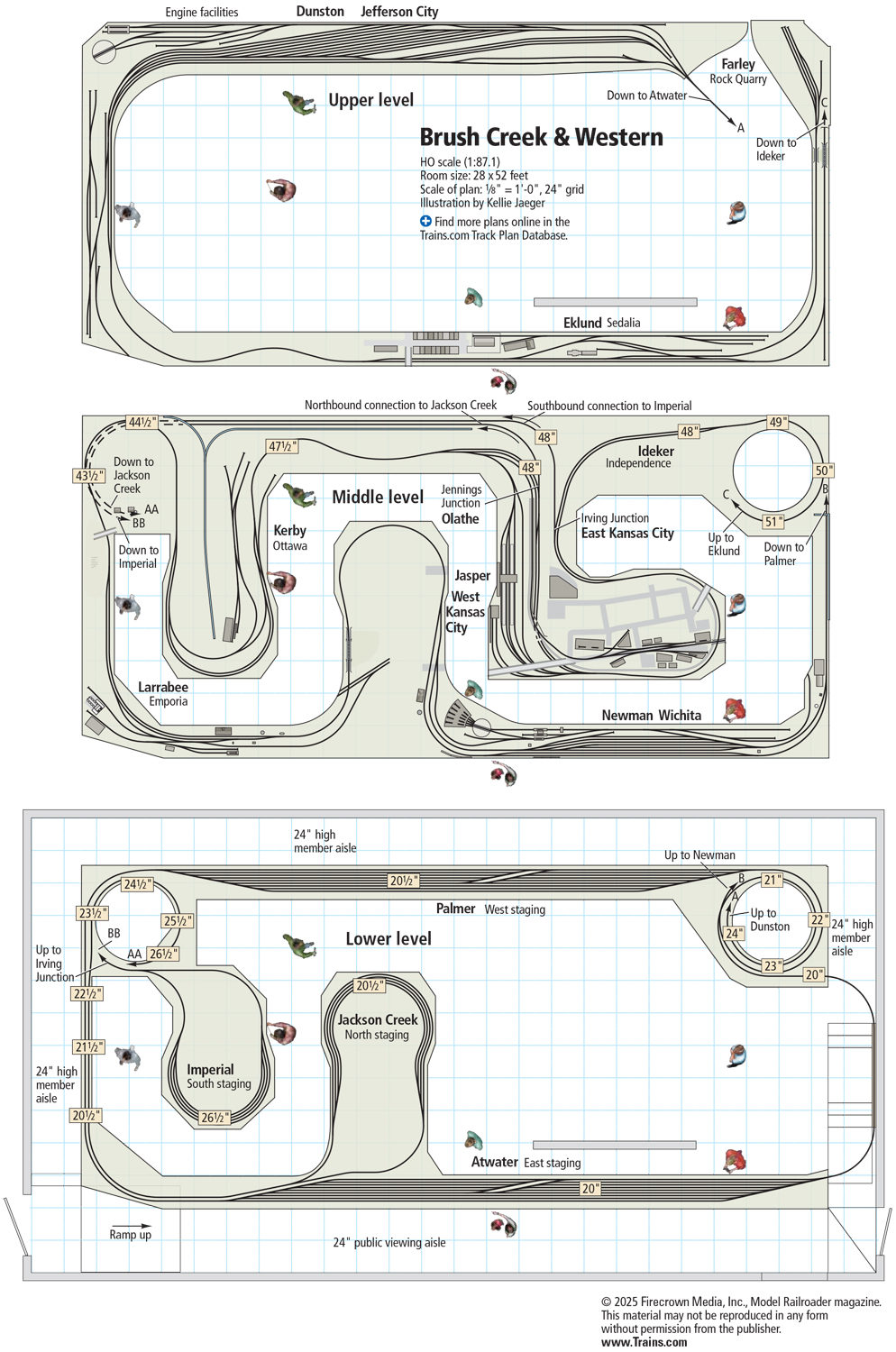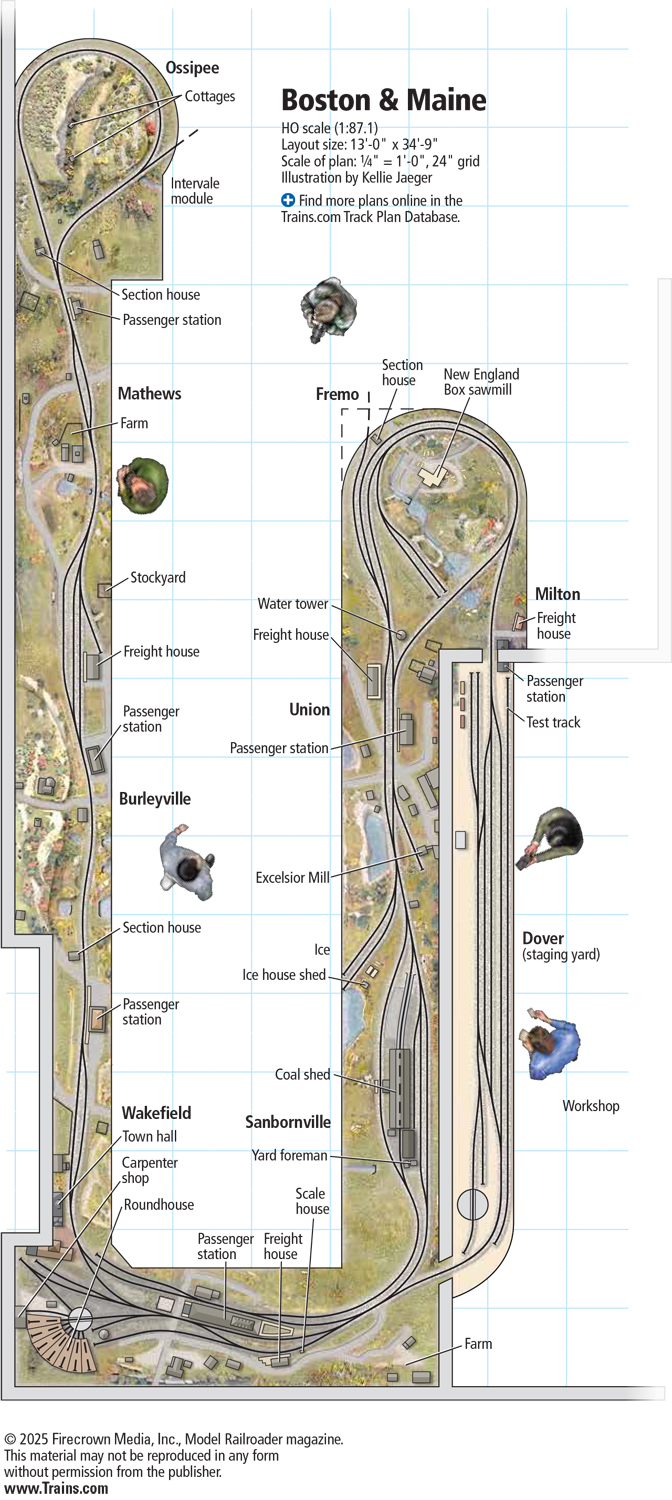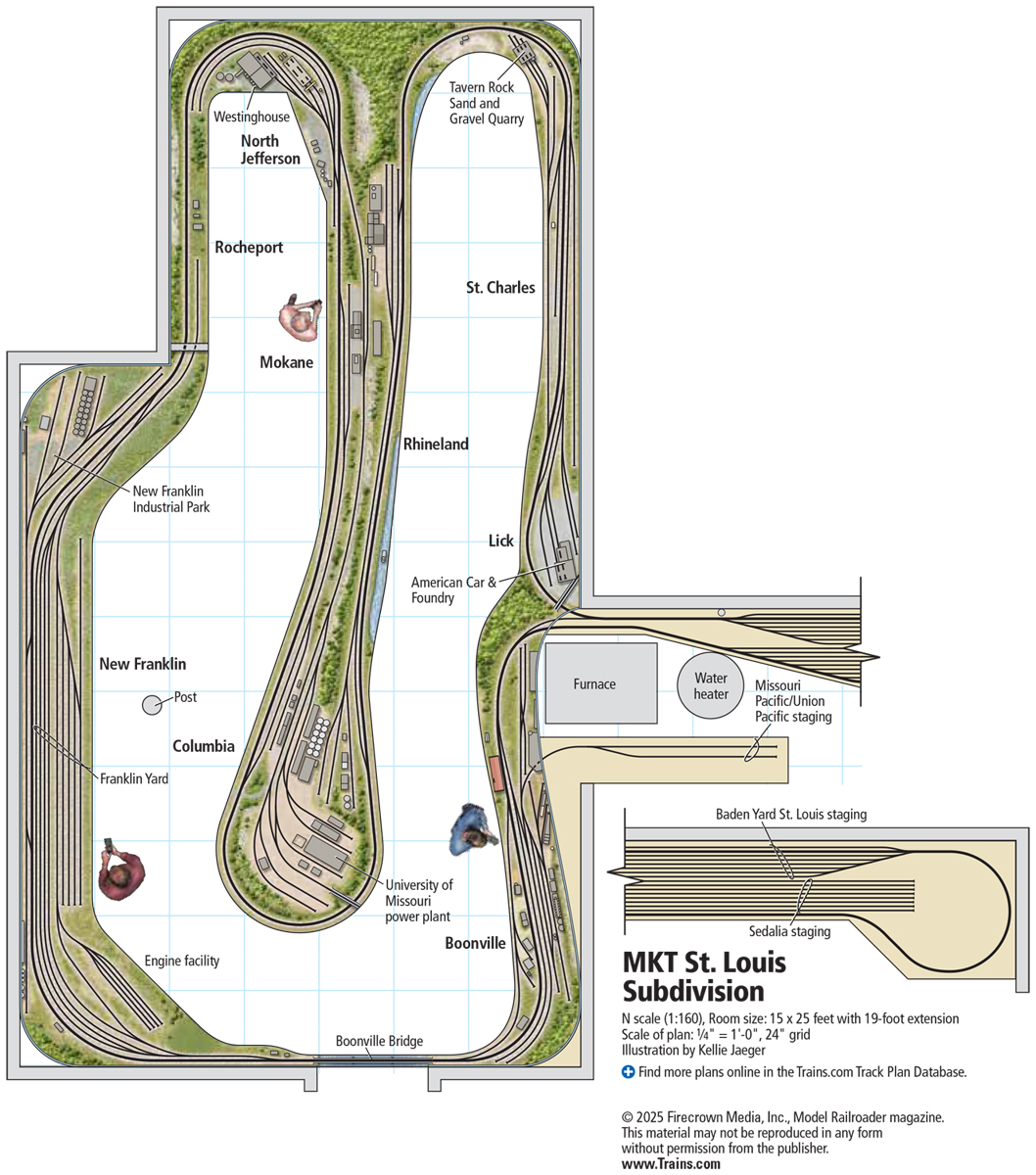Name: Fall Creek Branch
Layout owner: Robert Pethoud
Scale: HO (1:87.1)
Size: 15″ x 144″
Prototype: freelanced
Locale: Oregon
Era: 1950s
Style: sectional
Mainline run: 12 feet
Minimum radius: 26″
Minimum turnout: no. 5
Maximum grade: none
Benchwork: open frame
Height: varies
Roadbed: N scale cork on 1⁄4″ thick basswood
Track: code 83 flextrack
Scenery: red rosin paper stiffened with three applications of white glue; resin castings
Backdrop: acrylic paint on hardboard
Control: NCE Power Cab
This track plan was originally published in the March 2016 Model Railroader. Click on the link to download a copy of the track plan.















Is there a way to contact this layout owner/builder? I have some questions for them…
Hi Robert, I agree with David Shaw & Bob Neill’s comments on your switch lists and rain blocking rules. Do you have a means of knowing whether a freight car is loaded/empty, as some industries have requirements for either or both? I have set up your layout for personal use on Train Player 5.3 and have your switch lists and blocking rules running in the background. Thanks again for your great ideas.
Growing up as a railfan, mainline freights were always welcome, but it was the yards, spurs, and interchanges in the downtown area that held my interest. These three track plans, especially Lapp Siding, look like they would provide many operational possibilities.
I enjoyed seeing Robert Pethound's article about his switching layout. I missed the description about how the cars are uncoupled. Seeing the rules for blocking freight trains is very interesting, I have been trying to learn about operating trains, making models work like real trains. Where should I look for this type of rules?
I apologize, I'm getting long winded. Back in the early 1980's I built a switching module based loosely on John Allen's Time Saver (stretched to 110 in) to take to county fair and any place else to show young people (any age) about coupling/uncoupling trains. I would start by asking the victim to swap two box cars in a trailing point switch, then ,if they enjoyed that, ask them to swap two tank cars thru a leading point switch. Oh yes, one of the tank cars was a flat car with with a military tank (being moved for a museum or show). My layout was built from scrap wood with leftover track, so it is mot pretty. One serious catch is that there are only three (3) permit under track maggots identified with orange spots on the track ties. The obvious problem is that to uncouple "the closest maggot is waaaay over there. Some people have suggested I add a dozen more. So when you start pushing, don't stop." My scenery and structures are simple and cheep, little fingers have caused repair many times. Turnouts are controlled by ground throws, and they chose direction be using the DPDT switch (I control the throttle).
Bob Neill
Allan asked about the other 2 plans. It took a minute to find; Lapp Siding and the Sierra plan on the site. They came up as related to original article. http://mrr.trains.com/how-to/track-planning-operation/2016/01/bonus-track-plans-for-a-small-shelf-switching-model-railroad Thanks
Great switching layout Robert. I like how you thought through the switch lists to re-set the layout.
you can find these track plans by clicking on the Most Viewed tab and selecting the bonus track plans. They are downloadable too!
It's a nicely done extended version of John Allen's famous timesaver switching plan
Great switching layout for anyone tight with space. Scenery flows and it's not cramped with too many structures.
I really enjoyed the article in the March issue as I am wanting to build a similar sized switching layout. The switch lists were also helpful. Where are the other 2 layout plans mentioned at the end of the article?